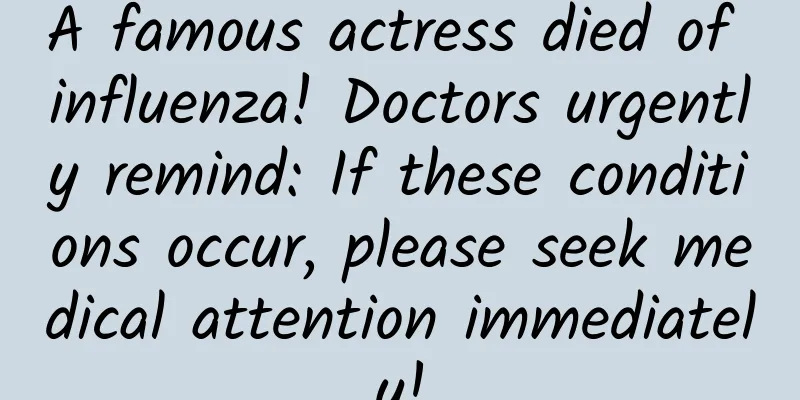"Open your mouth" to talk about health, the truth about temporomandibular joint disorder

|
Author: Chen Hua, Shenzhen University General Hospital Cheng Huina, attending physician at Shenzhen University General Hospital Reviewer: Deng Yongqiang, Professor and Chief Physician, Shenzhen University General Hospital The temporomandibular joint is a left-right linkage joint in the human maxillofacial region that has rotation and sliding functions. Its anatomical structure and movement mechanism are extremely complex. Its main functions include participating in chewing, speech, swallowing, and facial expressions. Figure 1 Copyright image, no permission to reprint Temporomandibular joint disorder is one of the most common diseases in oral clinics besides dental caries, periodontal disease and malocclusion. It is common in young and middle-aged people, especially those aged 20 to 30 years old, with a high prevalence. It is reported that the prevalence of young people abroad is 50% to 77%, while it is 40% to 60% in China, and it is still on the rise. The cause of the disease is not yet fully understood. Patients may experience symptoms such as snapping or murmurs in the temporomandibular joint, pain in the joints and/or masticatory muscles, headaches, too wide or too narrow mouth opening, and skewed mouth opening in their daily lives. Figure 2 Copyright image, no permission to reprint During the consultation, the doctor will diagnose the degree of temporomandibular joint disorder based on the patient's clinical symptoms, combined with the results of cone beam computed tomography and magnetic resonance imaging, and formulate a corresponding treatment plan. Conservative treatment is the main treatment for temporomandibular joint disorder, including drug therapy, physical therapy, bite splint therapy, intra-articular injection and irrigation therapy, muscle training therapy, etc. However, for patients with clear joint lesions, conservative treatment is ineffective, and the quality of life is significantly affected, surgical treatment should be considered. Next, we will introduce the common conservative treatment methods for temporomandibular joint disorders and health care measures in daily life: 1. Occlusal splint treatment As one of the commonly used methods in non-invasive conservative treatment, bite splints can effectively eliminate joint clicking noises and promote the recovery of mandibular function by adjusting the occlusal relationship. The younger the patient is, the shorter the medical history is, and the more cooperative the patient is, the better the effect will be. Failure to wear bite splints as prescribed by the doctor may make it difficult to maintain the effect and prone to relapse. 2. Joint cavity closure therapy Hyaluronic acid is an important component of joint fluid, which has the functions of lubrication, nutrition and repair of joints. By injecting hyaluronic acid, a protective barrier can be formed on the surface of joint tissue, changing the pressure in the joint cavity, reducing friction and damage, and helping to improve the positional relationship between the articular disc and the condyle. Some patients need multiple courses of treatment to be effective, and sometimes they need to be treated with a bite plate at the same time. The general treatment time needs to last for 3 to 6 months. 3. Physical therapy Physical therapy, including Chinese massage and acupuncture, laser therapy, transcutaneous electrical nerve stimulation and pulsed electromagnetic field therapy, can relieve joint and muscle pain, increase the degree of jaw opening and improve jaw function. 4. Daily health care In daily life, you can relieve discomfort in the TMJ area by: ◈Dietary adjustment: Avoid opening your mouth too wide and biting hard food, and reduce the consumption of hard-shelled foods, nuts, and foods that stick to your teeth. Cut large pieces of food into small pieces for easy chewing to prevent further irritation of the joints. It is recommended to eat mild foods, such as cooked vegetables, soft fruits, soups, and meat purees, to reduce the pressure when chewing. ◈Protect joints: Change the habit of chewing on one side, and pay attention to using the bilateral posterior teeth for balanced bite. Avoid chewing gum frequently or talking for a long time. Control the amplitude of yawning, and avoid laughing with your mouth open. Avoid overuse of joints (such as singing for a long time, etc.). Correct the bad habits of clenching teeth and supporting the chin. ◈ Local physiotherapy: hot compress can be applied to the jaw joint with a warm towel for about 15 minutes, 3 times a day, to relieve muscle stiffness. Pay attention to keeping the joint area warm, avoid cold in the pre-ear area in winter, and stay away from the cold air outlet of the air conditioner in summer. ◈Relax and reduce stress: Relaxation techniques such as deep breathing, meditation or stretching exercises can help relieve stress. Ensure adequate sleep and reduce tension in life and work. ◈Seek medical attention promptly: If you experience obvious limited mouth opening, snapping sounds in the joint area when opening and closing your mouth, or joint pain, you should go to the hospital promptly. At present, the cause of temporomandibular joint disorder is not completely clear, the course of the disease is long and it is easy to relapse. During the conservative treatment process, there may be cases where the effect is not good. If conservative treatment is not effective, surgical treatment can be considered if necessary. References: [1] Ma Xuchen, Zhang Zhenkang. Nomenclature, diagnostic classification and treatment principles of temporomandibular joint disorders[J]. Chinese Journal of Stomatology, 2002, (04): 4-6. [2] Zheng Huiyun, Liu Zhichao, Wang Huiming. Effects of unilateral chewing on the structure of the temporomandibular joint and its relationship with temporomandibular joint disorder[J]. Journal of Zhejiang University (Medical Edition), 2023, 52(03): 386-393. [3] Wen Jiayu, Wu Feng. Research progress on the treatment of anterior disc displacement of the temporomandibular joint with repositioning occlusal splint[J]. Journal of Stomatological Research, 2024, 40(10): 861-866. DOI: 10.13701/j.cnki.kqyxyj.2024.10.003. [4] Gou Xueli, Liu E, Hou Dawei, et al. Efficacy and aesthetic evaluation of hyaluronic acid intraarticular injection combined with occlusal splint in the treatment of irreversible disc advancement of the temporomandibular joint [J]. Chinese Journal of Aesthetic Medicine, 2023, 32(09): 125-129. DOI: 10.15909/j.cnki.cn61-1347/r.005906. |
<<: The inner voice behind “I don’t want to go to school”: the secret of school phobia
>>: Eat the right persimmons and your life will be as you wish
Recommend
Can women eat placenta during menstruation?
Menstruation is a process that every female frien...
Why does black sediment appear during menstruation?
As we all know, whether a woman's menstruatio...
Dysmenorrhea is unbearable! 9 kinds of medicinal food to help you stay away from the pain of dysmenorrhea
Menstruation is a normal physiological phenomenon...
How to eliminate breast fibroids
Breast tissue is extremely important to women and...
How to chase a Leo woman
Just like the description of the zodiac sign, Leo...
What does ant vegetable look like? What is the use of ant vegetable?
Antweed is actually horsetooth wormwood. It is pr...
How to treat vulvar papillary hyperplasia
The vulva is the place where viral infections are...
How to make a fat-reduced sandwich How to make a fat-reduced sandwich
For breakfast today, I made a fat-reducing sandwi...
How many days after menstruation is a woman's safe period
Many women choose to have sex during the safe per...
Treatment of hyperprolactinemia
Many people suffer from hyperprolactinemia, which...
Can I use ovulation test strips to test for pregnancy after ovulation?
For women who are preparing for pregnancy, their ...
Is it normal to have no fetal heartbeat at 2 months of pregnancy?
When I went for a pregnancy checkup in the second...
Can pregnancy be detected after 18 days of intercourse?
Can pregnancy be detected 18 days after having se...
What's wrong with a woman who feels weak all over and has limbs that are powerless?
When a person is in good health, he or she genera...
Xu Jiaxi from Unicorn Think Tank: In-depth report on the ventilator industry
Source: Unicorn Think Tank Source: Industrial Sec...









